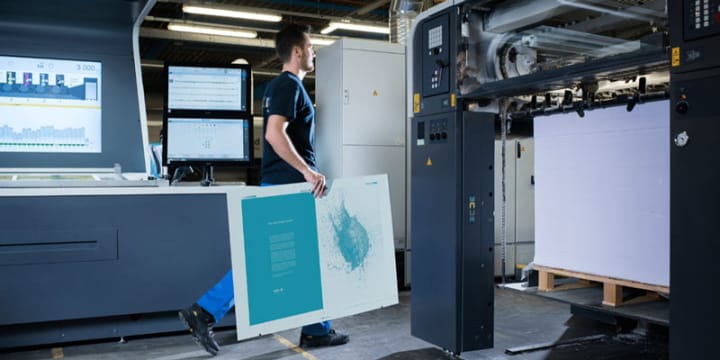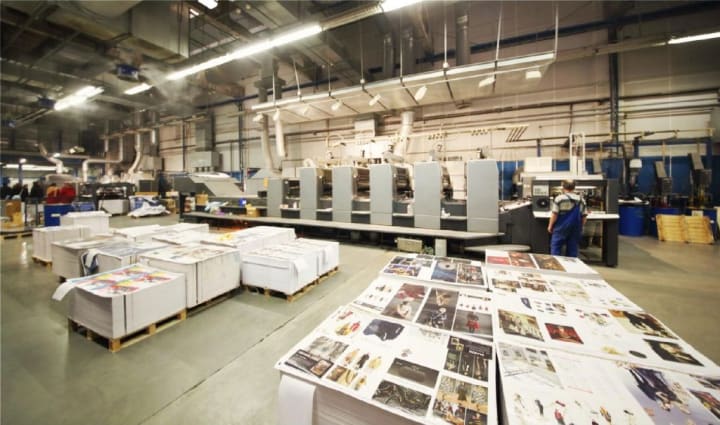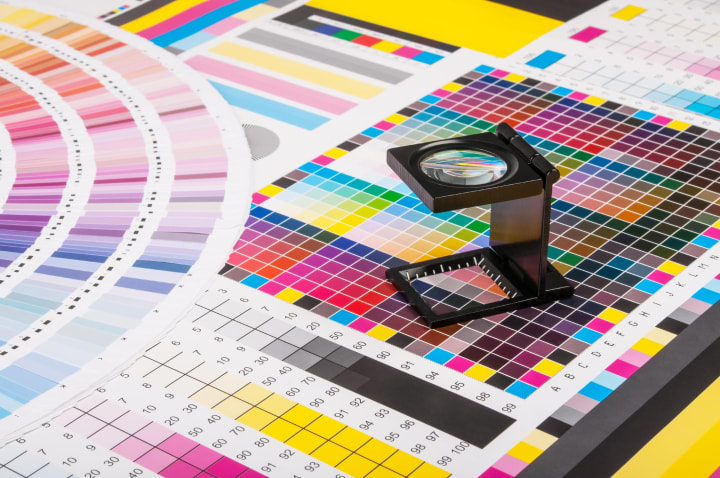Offset Printing Technology a Staple in Modern Printing
Evolving Of Offset Printing in the Last 20 Years

The history of printing is fascinating.
When Gutenberg invented movable types 600 years ago, he created something magical, a tool for knowledge dissemination.
However, printing dates back to 3500 BC, when the Persian and Mesopotamian civilizations used cylinder seals to certify clay-written documents.
Block seals, hammered coinage, pottery imprints, and cloth printing were also early forms.
Around the year 200, woodblock printing on paper began in China.
The so-called modern printing press, on the other hand, arrived in the Middle East 400 years after Europe.
Then, between 1769 and 1819, Alois Senefelder succeeded in creating a printing form with printing elements and free surfaces in the same plane, giving birth to lithography.

As someone who has been in the printing industry for 20 years, I have seen the evolution of offset printing technology firsthand.
This technology has revolutionized the way that we print, enabling us to produce high-quality prints in large quantities with speed and accuracy.
Offset printing works by transferring ink from a plate to a rubber blanket, which then applies the ink to the paper.
This process produces consistent, high-quality results across a range of paper stocks and finishes, making it ideal for a wide variety of printing applications.
So, what makes offset printing technology so special?
For one, it allows for high-resolution printing, producing sharp, clear images and text.
This is achieved through the use of high-quality plates, which are made from materials such as aluminum or polyester, and are imaged with the desired image through a chemical or laser etching process.

Another advantage of offset printing is that it is highly efficient, allowing for large quantities of prints to be produced quickly and with minimal waste.
This is accomplished by employing large printing presses with multiple printing units capable of handling multiple colors at the same time.

Furthermore, offset printing is extremely versatile, capable of printing on a wide range of paper stocks and finishes.
This includes everything from glossy coated papers to matte stocks, allowing for endless design possibilities.
In recent years, offset printing technology has continued to evolve, with advancements in plate-making technology, press design, and ink formulations.
An offset printing press is now a highly sophisticated piece of machinery that includes several printing and digital quality control devices such as cameras, color and registration control devices.
Prepress operation is also quite advanced.
Laser beams are used in modern computer to plate machines (CTP) to image the aluminum plates.
CTP machine speed and quality have greatly improved.
These advancements have resulted in even higher-quality prints with more vibrant colors and improved color consistency.
Of course, as with any technology, offset printing has its limitations.
It is not ideal for short print runs, as the setup process can be time-consuming and costly.
Additionally, it is not well-suited to printing on non-flat surfaces or unusual shapes.

Despite these limitations, offset printing technology has remained a staple of the printing industry, providing high-quality, efficient, and versatile printing solutions for a wide range of applications.
Offset printing's future is a mature technology with flat growth.
Digital printing, on the other hand, is growing at a double-digit rate.
Despite this, offset printing remains the dominant world printing technology, accounting for nearly half of global printed application consumption.
According to Info Trend's "Global Production Printing & Copy Marketing Forecast," total digital printing will increase to 500 billion pages printed with digital technologies, but this volume represents a very small share of total printed material globally.
Of course, digital printing is rapidly expanding, but it remains a small slice of the pie when compared to the enormous slice covered by offset printing technology.
In conclusion, as someone who has worked in the printing industry for over two decades, I can say that offset printing technology has been a game-changer for the industry.
It has allowed us to produce prints of unparalleled quality and consistency, and has enabled us to meet the demands of clients across various industries.
As the technology continues to evolve, I am excited to see what the future holds for this essential printing process.






Comments
There are no comments for this story
Be the first to respond and start the conversation.